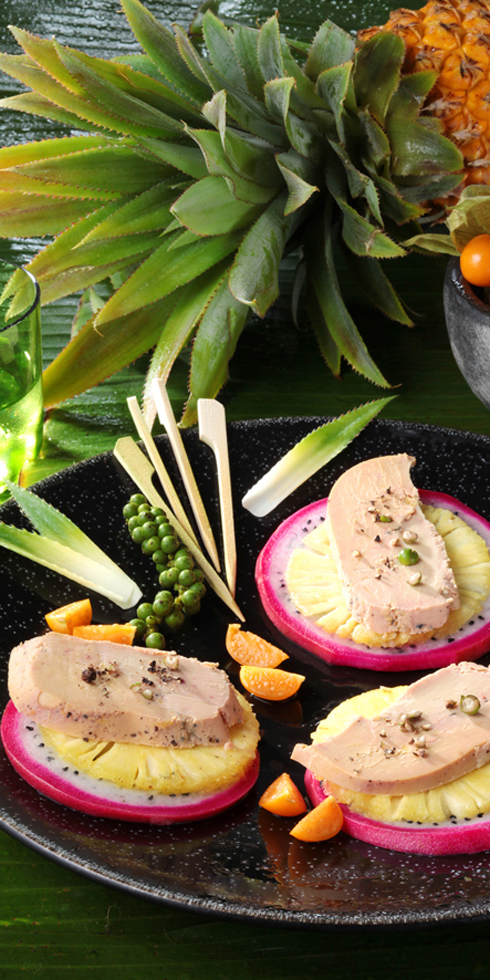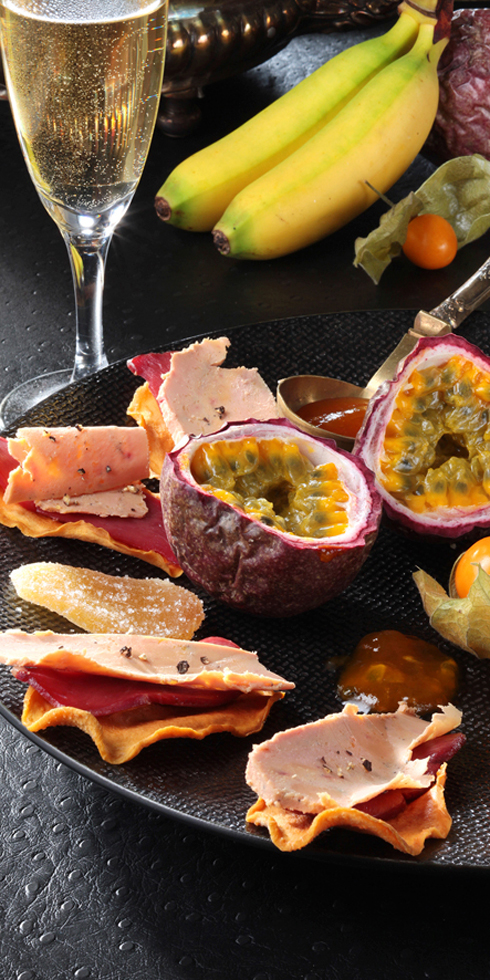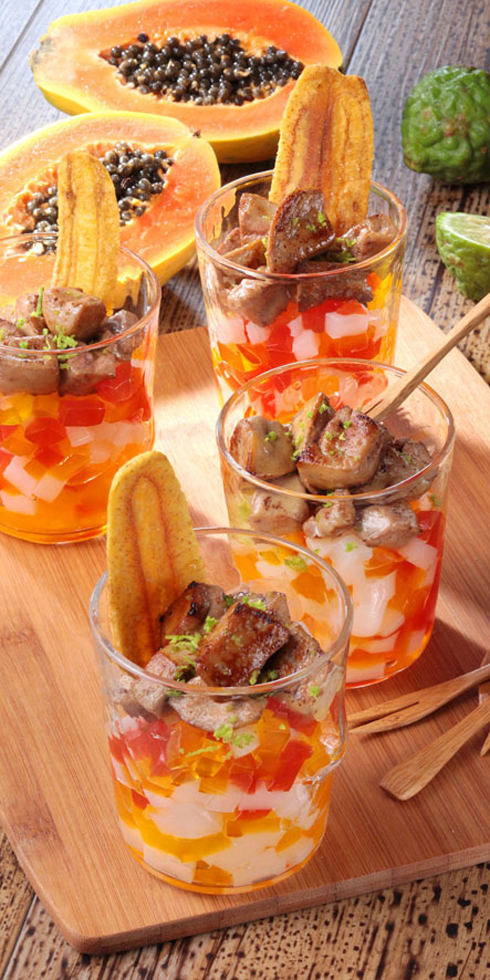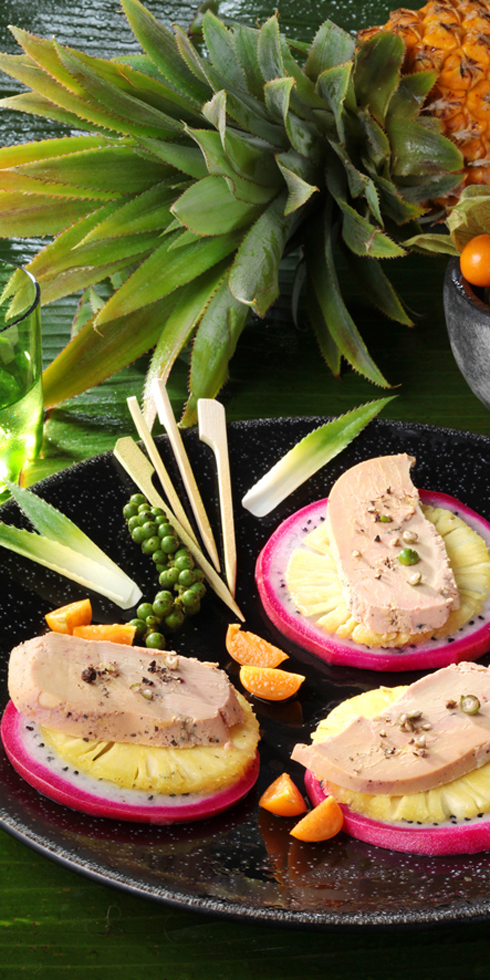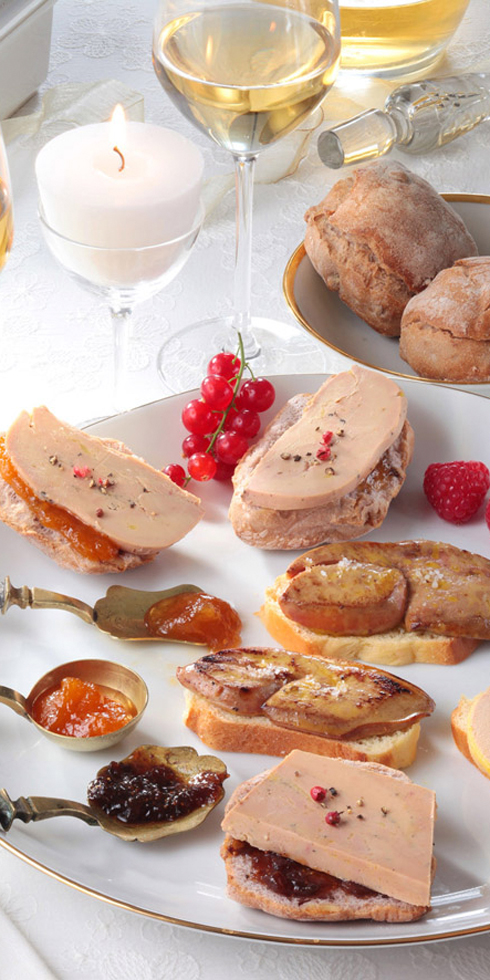Understanding
Foie Gras is the healthy liver of a healthy adult duck (or goose), reared using traditional methods : one-day old birds are kept in brooder houses until they are 4 to 5 weeks old.
As soon as they have grown a protective layer of plumage, they can circulate outside where they spend about two and a half months in a free-range environment. At the end of the rearing period, at about 12 weeks of age, the adult birds embark on a controlled phase-feeding programme. This lasts no more than 2 weeks. This allows the liver to create the fats which make it into Foie Gras.
Whether goose or duck, all tastes are catered for
Today, the strongly flavoured duck Foie Gras is the most popular variety . However, the particular refinement and delicacy of goose Foie Gras mean it too has no shortage of enthusiasts.
A raw goose Foie Gras generally weighs between 600g and 700g while a raw duck Foie Gras usually comes in at between 450g and 600g. However, to be labelled FOIE GRAS, a minimum weight is required: 400g for a goose Foie Gras and 300g for a duck Foie Gras.
The colour must be uniform and unmarked, the texture is consistent and smooth and the Foie Gras is firm to the touch without being hard. Goose Foie Gras tends to be slightly pinker.
Raw Foie Gras
You can also buy raw Foie Gras cru to make homemade terrines or sophisticated hot dishes. It is sold vacuum packed (mass retail) or with no special packaging, in the fattened duck and goose markets which have become a traditional feature of life in southwest France.
It can be kept for 7 days at a temperature of 0°C to 4°C.
Ready-to-eat Foie Gras
Ready-to-eat Foie Gras comes in three regulated appellations:
- Whole Foie Gras
- Foie Gras
- Block of Foie Gras
Three regulated appellations
The appellations for all Foie Gras-based preparations sold in France have been regulated since 1 January 1994. Only 3 appellations can be called "Foie Gras" when sold: these only contain Foie Gras and seasoning.
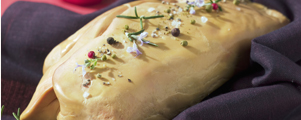
Whole Foie Gras
This is a preparation comprising whole Foie Gras or one or more whole lobes of Foie Gras and seasoning. The colouring is uniform when sliced.
The only authorised seasonings are salt, sugar, spices and aromatic plants, eaux de vie, and wine, including liqueur wine.
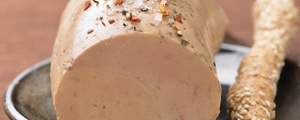
Foie Gras
This is a preparation comprising pieces of Foie Gras lobes lumped together, possibly from different birds, together with seasoning.
It has an attractive mottled appearance when sliced.
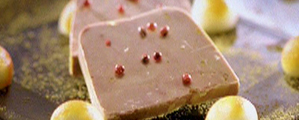
Block of Foie Gras
This is a preparation comprising reconstituted Foie Gras and seasoning. When pieces of Foie Gras lobes are included, it then becomes "Block of Foie Gras with pieces" and is copious with clearly visible chunks upon cutting.
In addition to these 3 appellations, there are preparations based on goose or duck Foie Gras.
Parfait of Foie Gras has a minimum Foie Gras content of 75%. Pâtés, mousses, purées or galantine have a Foie Gras content of at least 50%.
Presentations depending on the cooking method
Within a single appellation, Foie Gras can be separated into two main categories, depending on the cooking method, which determines both their texture and shelf-life.
Semi-cooked or semi-preserved Foie Gras
Its creamy texture is a touch firmer than for raw Foie Gras and it can be stored for 6 months at a temperature of 2°C to 4°C. Presented in a jar, can or sealed container, it is cooked right through at 64-85 °C. Shrink-wrapped or vacuum packed it can be stored for 21 days at 2-4 °C and shrink-wrapped or vacuum packed in pastry , brioche or a terrine, 15 days at 2-4 °C.
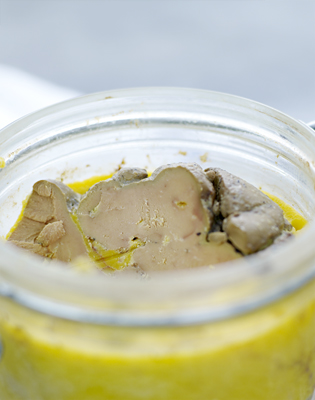
Preserved Foie Gras
Presented in a jar or can, it is cooked right through at 110°C. Its texture, which is even creamier than with the previous presentations, changes over the years. Since it absorbs its own fats, the Foie Gras becomes creamier with age. It can be stored for several years (10 to 15 °C).
NB: The shelf-life is indicated by the producer. For instance, 6 months is a standard period but this may be longer or shorter depending on the type of heat processing. The producer's indications should therefore be taken fully into account.

